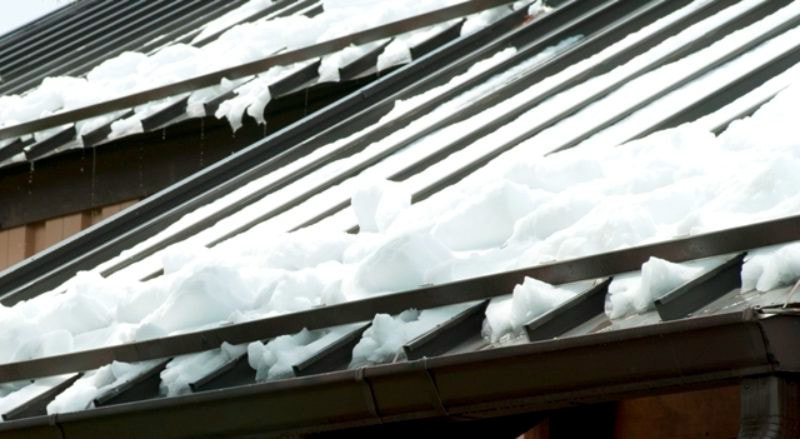|
Snow stop guards are rooftop devices that help snow and ice to drop off in tiny bits or allow ice and snow to melt completely before falling to the ground. Snow guards help prevent a sudden release of ice and snow from the roof which is known as a roof avalanche. Snow and ice can slide off your roof and can weigh hundreds of pounds, just depending on the size of your roof. And, a snow avalanche can cause a lot of damage to your landscaping, gutters, plumbing vents, skylights, people, pets and cars. Snow guards can prevent a roof avalanche on metal roofs, and they have been around for hundreds of years. Historically, snow stop guards are used on slate, tile and metal roofs. They are necessary to help stop the fast release of winter snow. Needed Information for Snow Stop GuardsIf you are considering snow stop guards, you will first have to determine your roof pitch, the panel length from roof ridge to eave, and the total length of your home. You will need to figure out your snow loading rating for your area. Once you have all the needed information, you can use a snow guard spacing calculator to help determine the type of snow retention system that will work for your roof. Different Options for Snow Stop GuardsThere are many different selections to choose from when selecting the right snow retention system. The pad style snow guards can be installed with screws on a metal roof that have exposed fasteners. If you have a standing seam roof, the pad style model can be installed with an adhesive instead. Both can be installed on through fastened panels or standing seam panels. Pad style snow guards do not offer the same strength as a continuous rail system. These systems will attach to either a mount that is fastened into a structural member, or through clamps that can attach to a standing seam panel. Rail Snow Stop GuardsRail type snow guards use stainless steel hardware for attaching. And you can match the color to the color of your roof. They will use a flat stock panel that has been cut down to slide into the face of the rail. So, you do not have to worry about your snow guards fading at a different rate as you roof panels. Mostly, continuous rail type snow guards can be installed in a grid pattern. Sometimes multiple rows are required to properly retain the snow accumulation. But rail type snow guards tend to use single rows due to the greater holding power versus the glue down pad style. Proper Installation of Snow GuardsProper installation of pad type or rail type snow guards is very important. Pad style guards need to be placed in optimum weather conditions. That means temperatures of 40 degrees and up, and they take seven to fourteen days to fully cure.
Continuous rail types do not need a certain temperature to be installed. They can be placed in virtually any weather condition. Consult with a professional when you decide on snow stop guards.
0 Comments
Your comment will be posted after it is approved.
Leave a Reply. |
|
|
Call Today: 303-447-1555
|
Copyright ©2023 Colorado Seamless Gutters, Inc. All rights reserved. | SEO & Digital Marketing by Infront
We accept:






